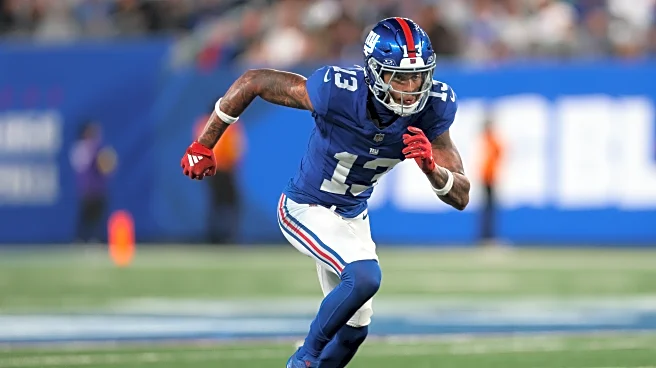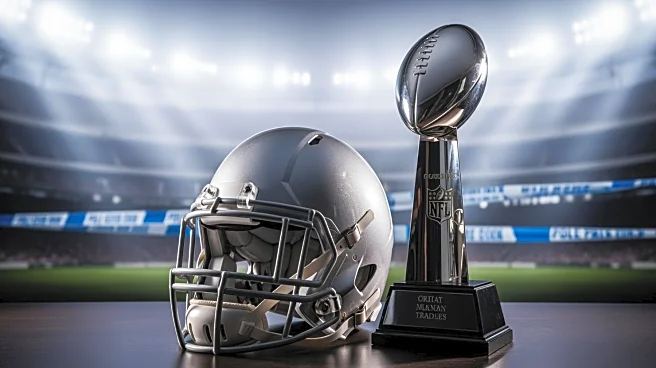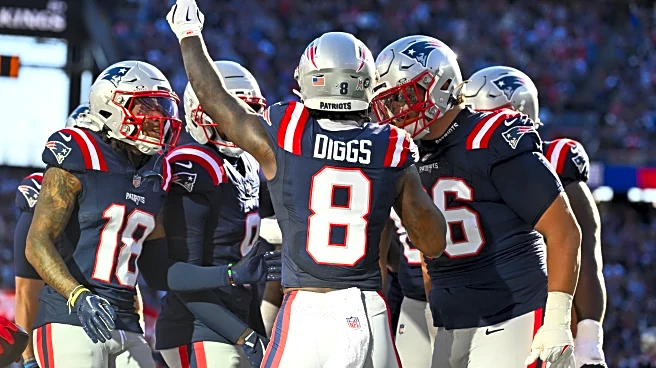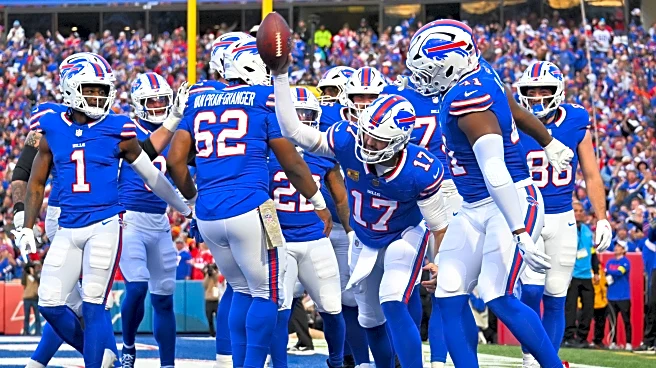What's Happening?
The 2025 NFL trade deadline has led to significant changes in the salary cap outlook for various teams. The Indianapolis Colts made a notable acquisition by trading for cornerback Sauce Gardner from the New
York Jets, sending two first-round picks and a 2024 second-round pick in exchange. This move aims to bolster the Colts' defense, which currently ranks 26th in passing yards allowed. Despite the high cost, Gardner's rookie contract means the Colts' salary cap remains largely unaffected for the current season. Meanwhile, the Dallas Cowboys acquired defensive lineman Quinnen Williams from the Jets, along with linebacker Logan Wilson from the Cincinnati Bengals, altering their cap space from the second-most to the fifth-most in the league. Other trades included Rashid Shaheed moving from the New Orleans Saints to the Seattle Seahawks, and Jakobi Meyers from the Las Vegas Raiders to the Jacksonville Jaguars. These transactions have reshuffled the salary cap standings, with the New England Patriots maintaining the most cap space.
Why It's Important?
The trade deadline transactions are crucial for teams looking to strengthen their rosters for the remainder of the season and beyond. The Colts' acquisition of Sauce Gardner is a strategic move to improve their defensive capabilities, potentially enhancing their playoff prospects. For the Cowboys, acquiring Quinnen Williams and Logan Wilson signifies a push to solidify their defense, which could be pivotal in their quest for a championship. These trades also impact the financial strategies of the teams involved, as managing salary cap space is essential for future player acquisitions and contract negotiations. The reshuffling of cap space among teams like the Jets and Cowboys highlights the dynamic nature of team management in the NFL, where financial flexibility can be as important as on-field performance.
What's Next?
As teams adjust to their new rosters, the focus will shift to integrating new players and optimizing team performance. The Colts will aim to leverage Gardner's skills to improve their defensive rankings, while the Cowboys will look to capitalize on their strengthened defensive lineup. Teams with increased cap space, such as the Jets, may explore further trades or signings to enhance their competitiveness. The upcoming offseason will be critical for teams like the Patriots, who have the most cap space, as they plan for future acquisitions and contract renewals. The impact of these trades will be closely monitored as the season progresses, with potential implications for playoff positioning and long-term team strategies.
Beyond the Headlines
The trades highlight the complex interplay between player performance, team needs, and financial management in the NFL. The decision to trade high-value draft picks for established players like Gardner reflects a calculated risk by the Colts, prioritizing immediate defensive improvement over future potential. Similarly, the Cowboys' moves indicate a focus on short-term gains to enhance their championship prospects. These transactions also underscore the importance of strategic planning in managing salary cap space, which can influence a team's ability to compete effectively in the league. The evolving salary cap landscape will continue to shape team strategies and player market dynamics in the NFL.













